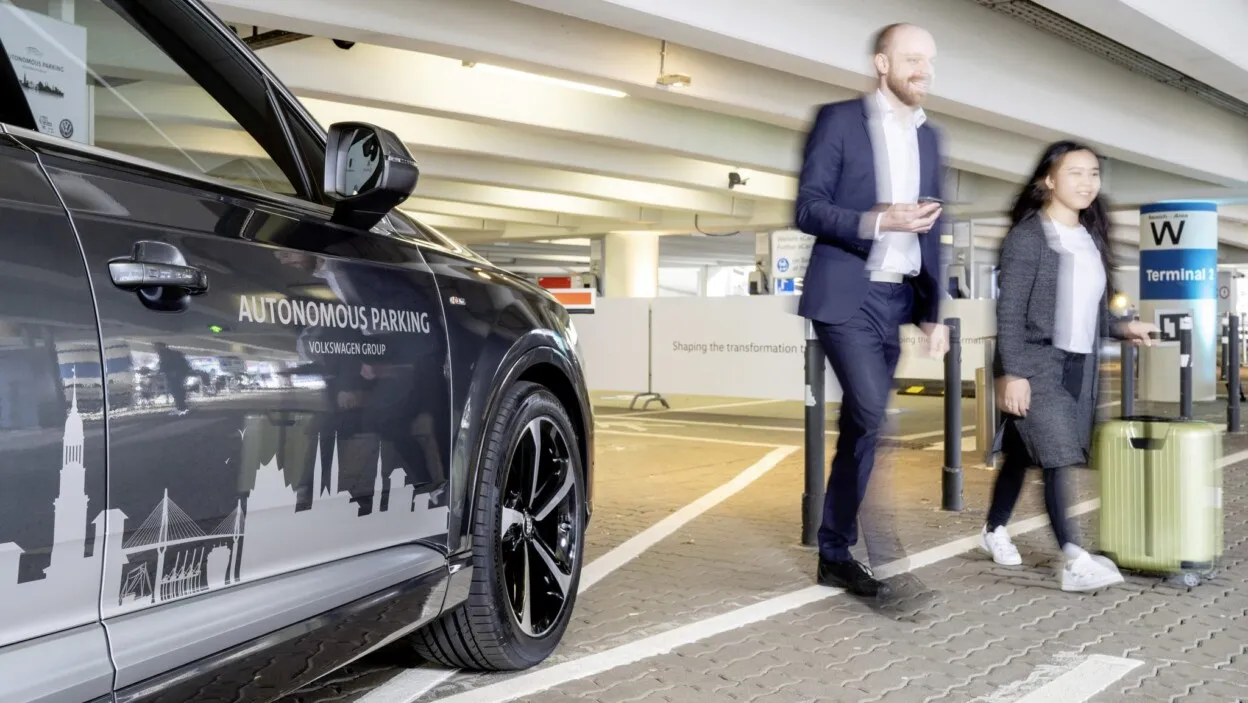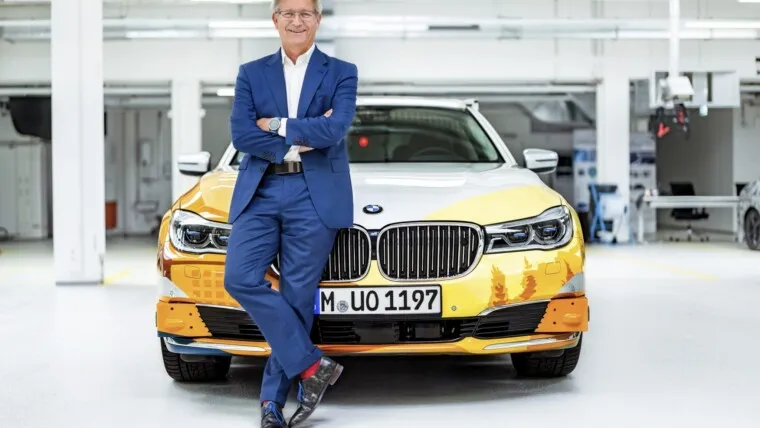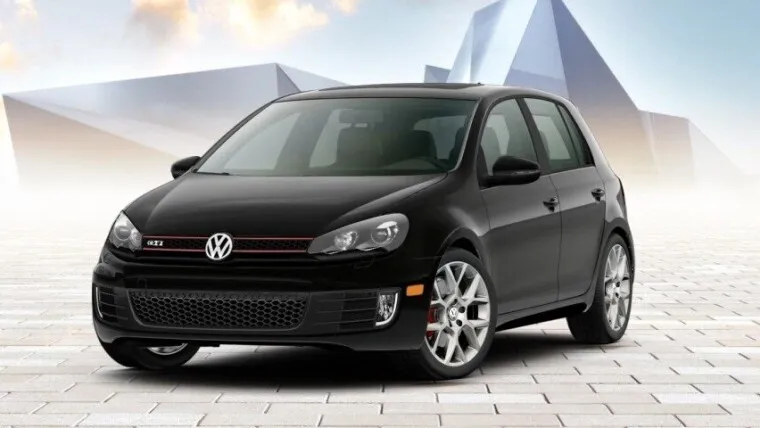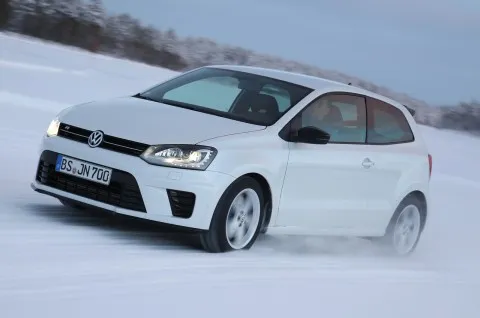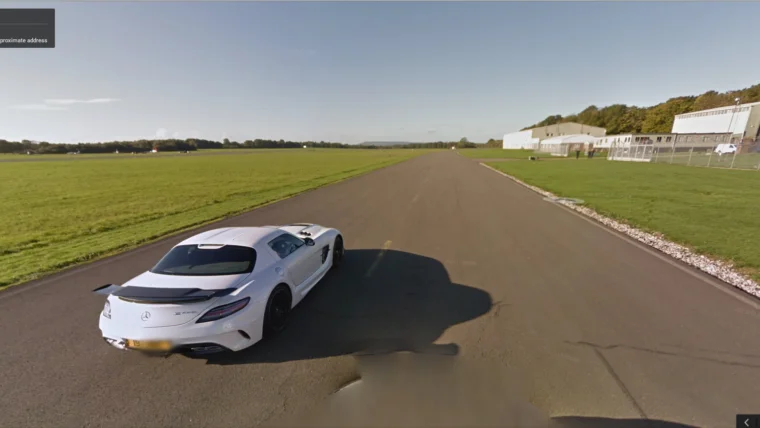Using what is to date unique technology, the Volkswagen Group is currently testing autonomous parking at Hamburg Airport: based on a car park map the Volkswagen, Audi and Porsche vehicles navigate their way to a parking space on their own. Orientation is provided for them by simple pictorial markers installed in the multi-storey car park. Its advantage: this can be used in essentially any car park. The function is set to be available for the first customers in selected multi-storey car parks from the start of the next decade.
Johann Jungwirth, Chief Digital Officer of the Volkswagen Group, says: “Autonomous parking can make an important contribution to creating convenient, stress-free mobility for our customers. We therefore want to democratise the technology and make it accessible to as many people as possible.”
The autonomous parking function being publicly demonstrated for the first time in Hamburg has already left the research lab and is currently at an advanced stage of development. It is due to be ready to order for some initial Volkswagen Group vehicles from the start of the next decade.
Safety the top priority: autonomous parking to be introduced in stages
In the first stage it will be possible to use autonomous parking in selected multi-storey car parks in an exclusive traffic flow, i.e. in separate areas of the car park not accessible to people. Before operation in exclusive traffic begins, the autonomous parking system is being extensively tested: thousands of parking procedures in different places around the world are being performed and analysed. In parallel with this safeguarding of the system through simulations is also taking place.
The next stage will be operation in mixed traffic, i.e. vehicles parking and moving autonomously in the same areas of the car park as cars with drivers. And the vision is clear: to have vehicles parking autonomously in all car parks, including public ones, such as outside supermarkets.
There are good reasons for gradually introducing autonomous driving functions: “What we offer our customers works absolutely reliably and safely. This is what today’s technology for vehicles from the Volkswagen Group stands for, and we will continue to keep this promise – also in the era of autonomous driving,” says Johann Jungwirth.
The vehicles with the autonomous parking function will all be equipped with an active surroundings recognition system. This is able to recognise objects and react accordingly, be that by going around them, braking or completely stopping. Vehicles are equipped for this with a sensor set, including, for instance, ultrasound, radar and cameras. The data is processed in a central control unit in the car.
In the multi-storey car park the car uses map data to drive on its own accord to a vacant parking space. Simple pictorial markers put up in the car park provide the vehicles with a means of orientation.
Mobility of tomorrow is a joint undertaking: three brands from the Volkswagen Group, the Free and Hanseatic City of Hamburg and Hamburg Airport are cooperating on autonomous parking
One of the trials of autonomous parking is currently being run in Hamburg: as part of the partnership between the Volkswagen Group and the Free and Hanseatic City of Hamburg, the Volkswagen, Audi and Porsche brands are trialling autonomous parking at Hamburg Airport. The brands are pooling their know-how with the aim of quickly getting the new function ready for use in production vehicles across all three brands. The brands bring with them many years of experience from the development of a range of parking functions. They are also bringing together their latest expertise in relation to autonomous driving.
And that’s not all! As a mobility provider of the future, the Volkswagen Group is demonstrating at Hamburg Airport an integrated concept that systematically puts the focus on the customer and their needs. To this end the brands are complementing autonomous parking with a variety of different services, thus giving a look ahead to a full-service offering for the convenient, stress-free parking of the future.
Volkswagen is turning your own boot into your delivery address
With “Volkswagen We” the brand is even now already extending their portfolio of services through online functions, services and apps. Over the next few years this range will be significantly expanded, making numerous additional services available to Volkswagen customers. The “We Park” app, which is already available and highly popular, is one example. “We Deliver” is another. With these services the car does not just simply become digital, it simultaneously acts as the interface for increasingly more areas of life. With the “We Deliver” service users will in future have parcels that they order online delivered directly to their car. The service has already been tested in Berlin as part of a pilot phase. The Volkswagen’s boot acts here as the delivery address. The vehicle’s position is given with the order. The courier uses GPS data to pin down the location of the freely accessible parked car within a radius of 300 metres and is given one-time, secure access to the boot. The aim is that in future it is not just deliveries that will be possible. The intention is that couriers should be able to collect returns and franked parcels too.
Highly connected, automated and electrified: into the future with Audi AI
On the way to fully automated driving functions and the vision of autonomous driving, the Audi of the future is going to offer even more: continuously further enhanced vehicle intelligence is being joined by a high level of interaction intelligence. For it is not only on the road that the car of the future has great potential for saving time and providing added convenience: in specially designated areas, known as ‘Audi AI Zones’, an Audi will in future take care of a variety of different things autonomously – without the driver being present. If, for example, a travelling salesman leaves his Audi in a marked area (Handover Zone), the car is then able to drive independently and with no driver to various service facilities, such as a car wash, a filling station or indeed a shirt laundry service. The Audi, which thanks to Audi AI is both intelligent and connected with its surroundings, also finds a parking space itself and steers itself precisely to it. At the desired time it is back in the Handover Zone ready to continue the journey. The driver can track the car’s actions at any time via an app and also add new services.
Porsche: Park & Charge – fully automatic charging while the car is parked
“In public areas, and possibly even at home, charging robots will contribute to increasing the acceptance of electric mobility,” says Uwe Michael, Head of Electrics/Electronics Development at Porsche. For the car gets not only automatically parked, but automatically charged as well. After going to a restaurant, for instance, the customer returns to a fully charged vehicle. Michael: “At the same time, utilisation of the charging infrastructure is improved, because the car is only at a charging point for as long as it takes to be charged.”
This is how Park & Charge works: as soon as the electric car or hybrid model has parked up fully autonomously at a charging point, vehicle and charging robot communicate via WLAN. The vehicle’s charging cap is automatically opened, the charging robot’s arm moves forward and establishes the connection between electric mains and on-board charger. Afterwards, the vehicle automatically parks in a different parking space, thus freeing up the charging point for the next electric car.
Autonomous parking provides a look ahead at urban mobility of the future
The trial of autonomous parking run in Hamburg shows us the shape of urban mobility of the future: new mobility solutions are changing the traditional role of the purely engineering-oriented car manufacturer, new partnerships are emerging and customers and their needs are increasingly becoming the central point of focus. Johann Jungwirth says: “Our clear objective is autonomously driving vehicles that facilitate mobility for everyone at the push of a button and that gives people back time and quality of life as well as greatly improving safety on the roads. Autonomous parking is a milestone on the way there.”

